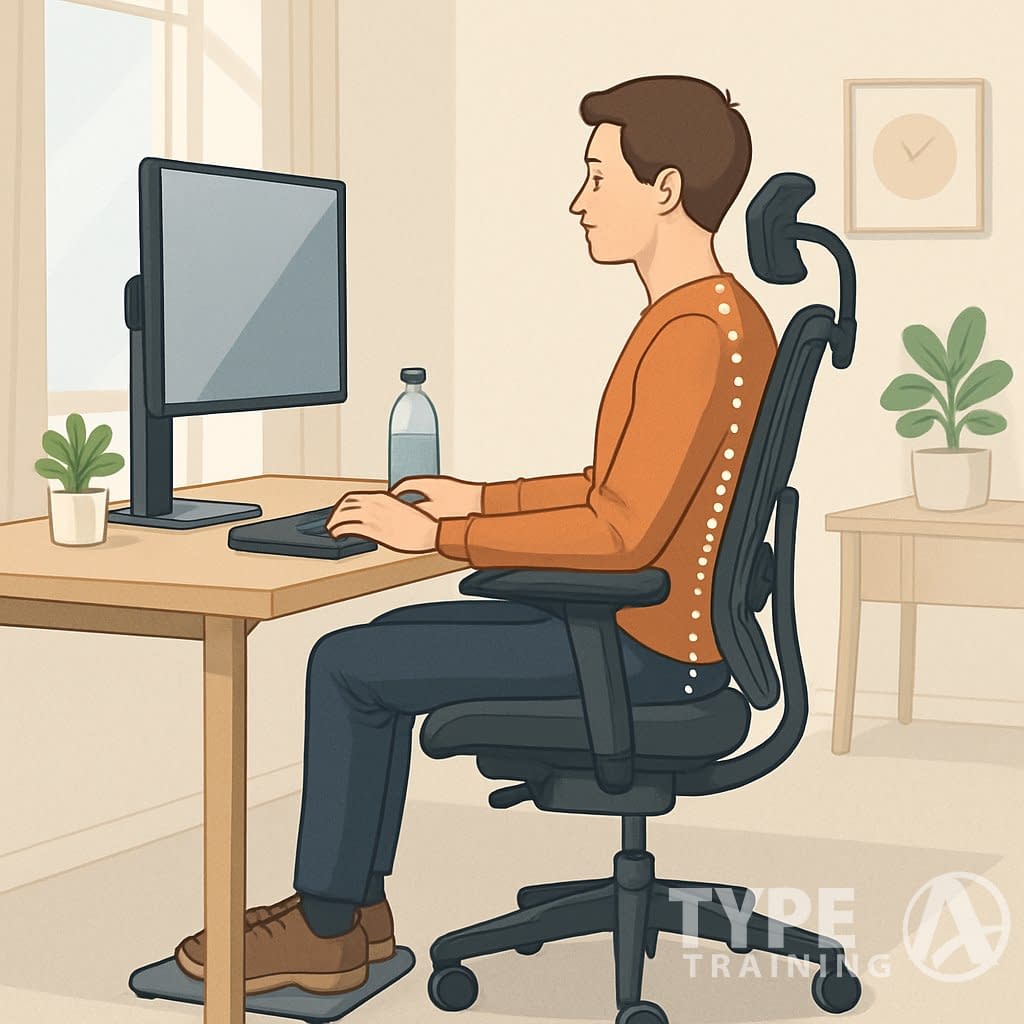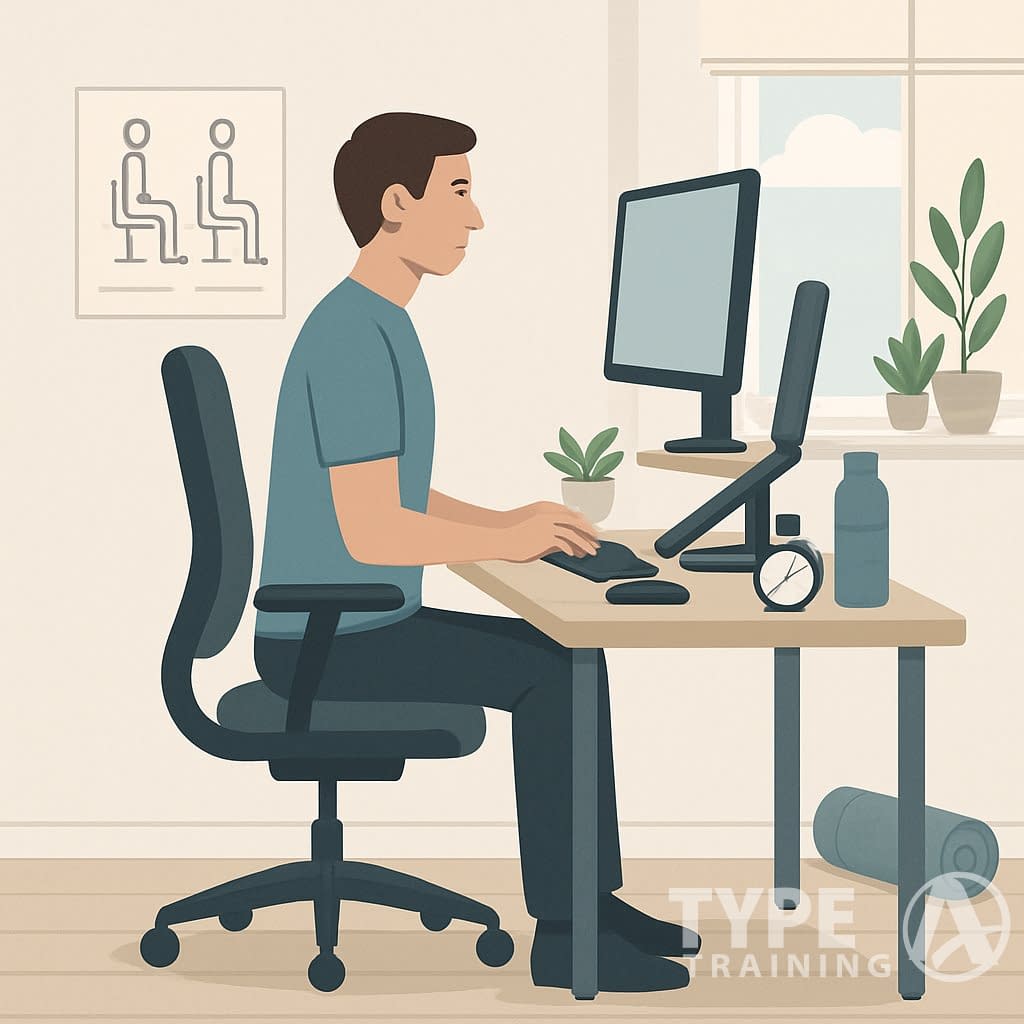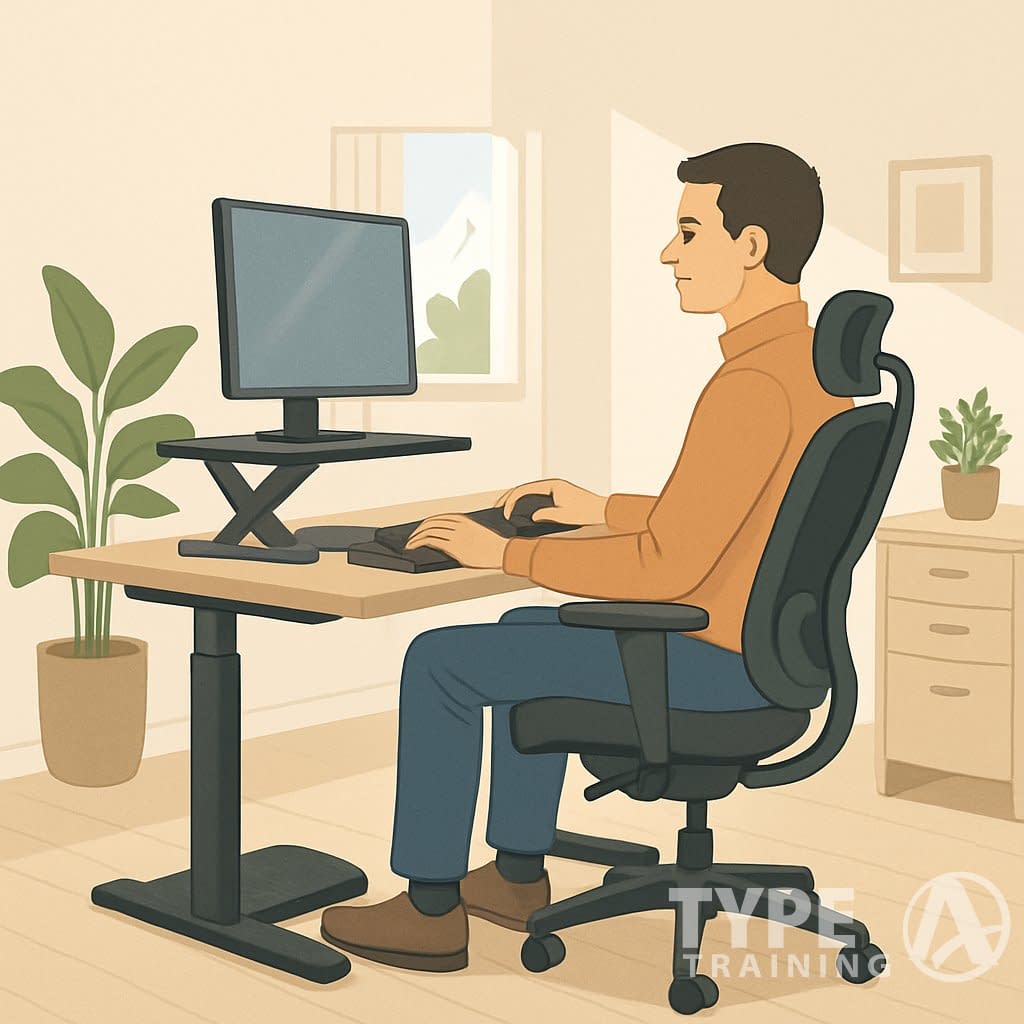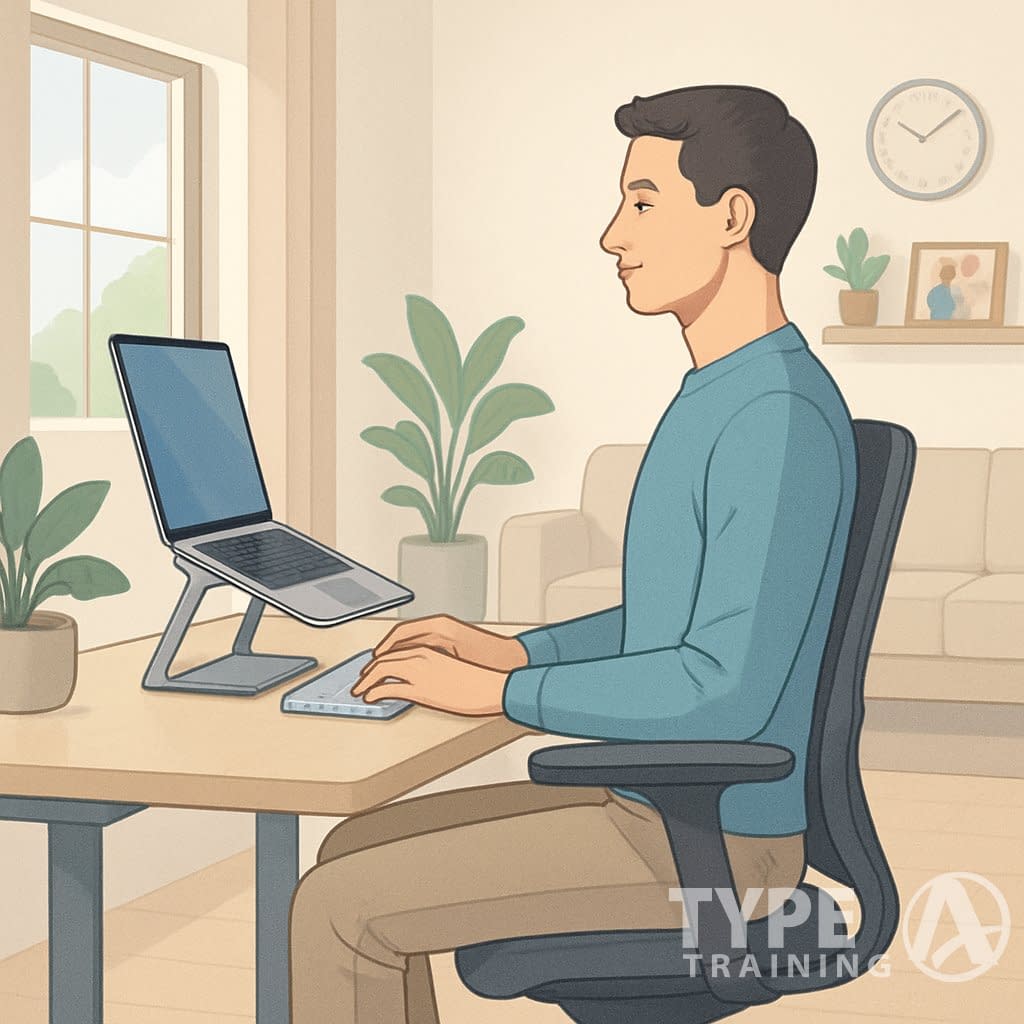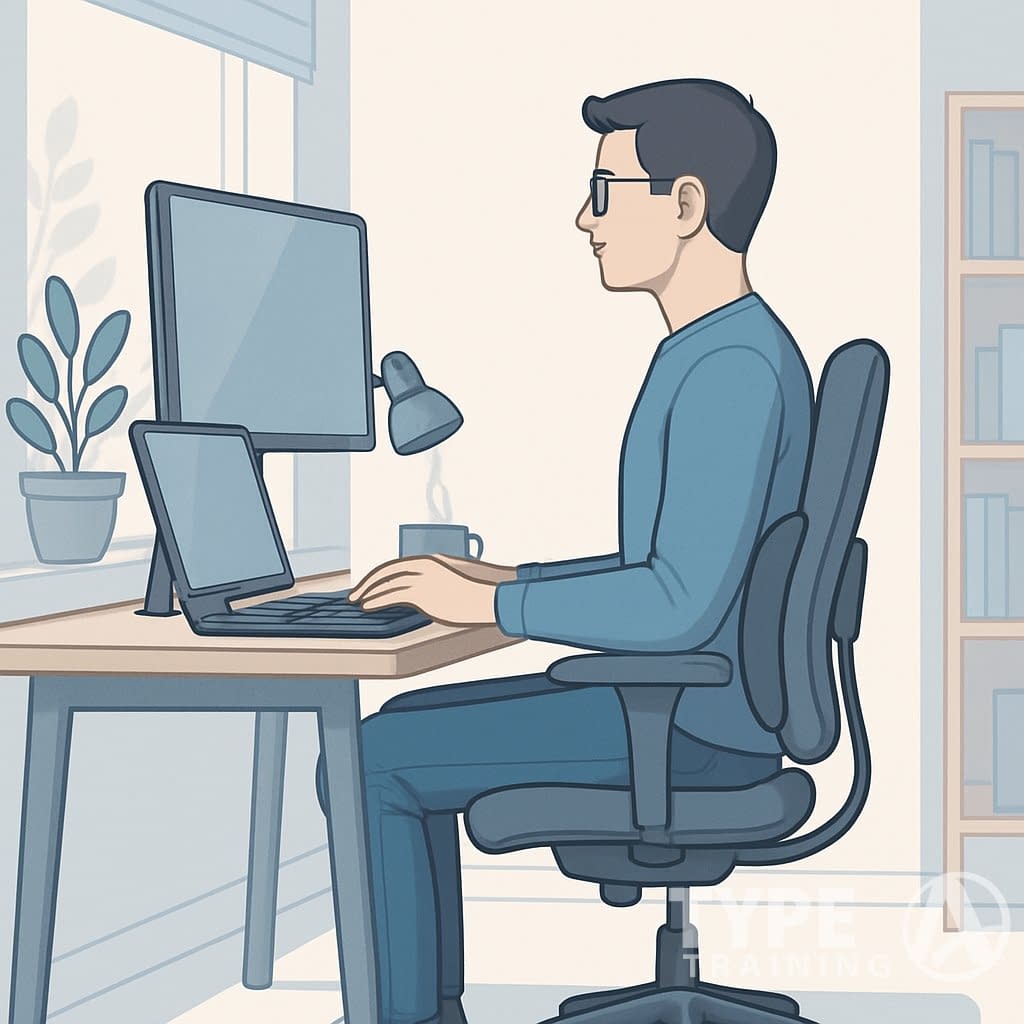Remote work has totally changed how millions of people spend their days. It’s created new health challenges too.
Many folks end up hunched over laptops at kitchen tables or slouched on couches for hours. This shift from traditional offices has brought more neck pain, back problems, and other issues tied to poor posture.
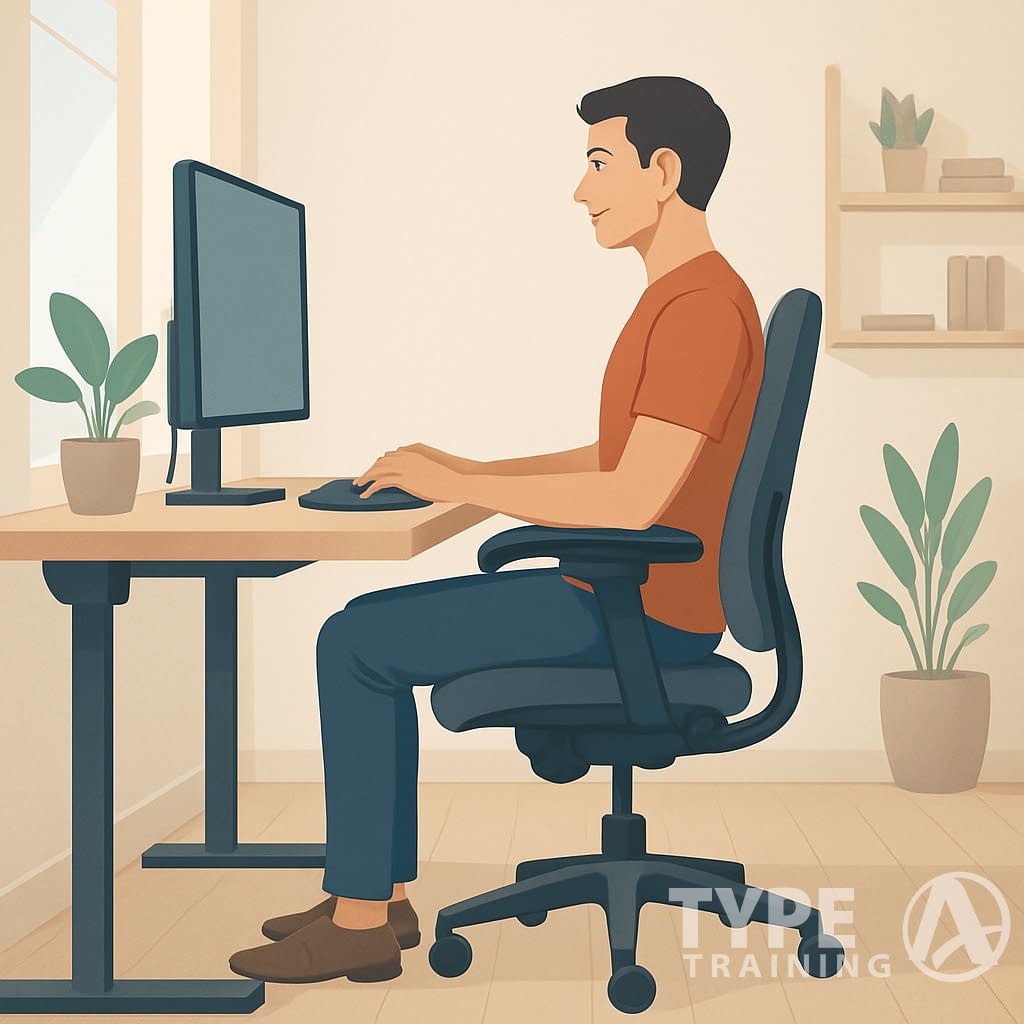
The good news? You can keep healthy posture at home with some simple workspace tweaks and better daily habits. You don’t need fancy equipment or a full-on office makeover to protect yourself.
Popular posts:
Small adjustments—like raising your laptop screen or taking regular breaks—can really change how your body feels by the end of the day.
Creating a healthy home workspace goes beyond just comfort. Poor posture can sap your energy, mess with your focus, and even hurt your long-term health.
With a little effort and the right setup, you really can enjoy remote work without sacrificing your body.
Key Takeaways
- Raise your screen to eye level—your neck and back will thank you
- Breaks and stretches fight the effects of sitting too long
- Building good posture habits early pays off for your health and work
The Impact of Remote Work on Posture
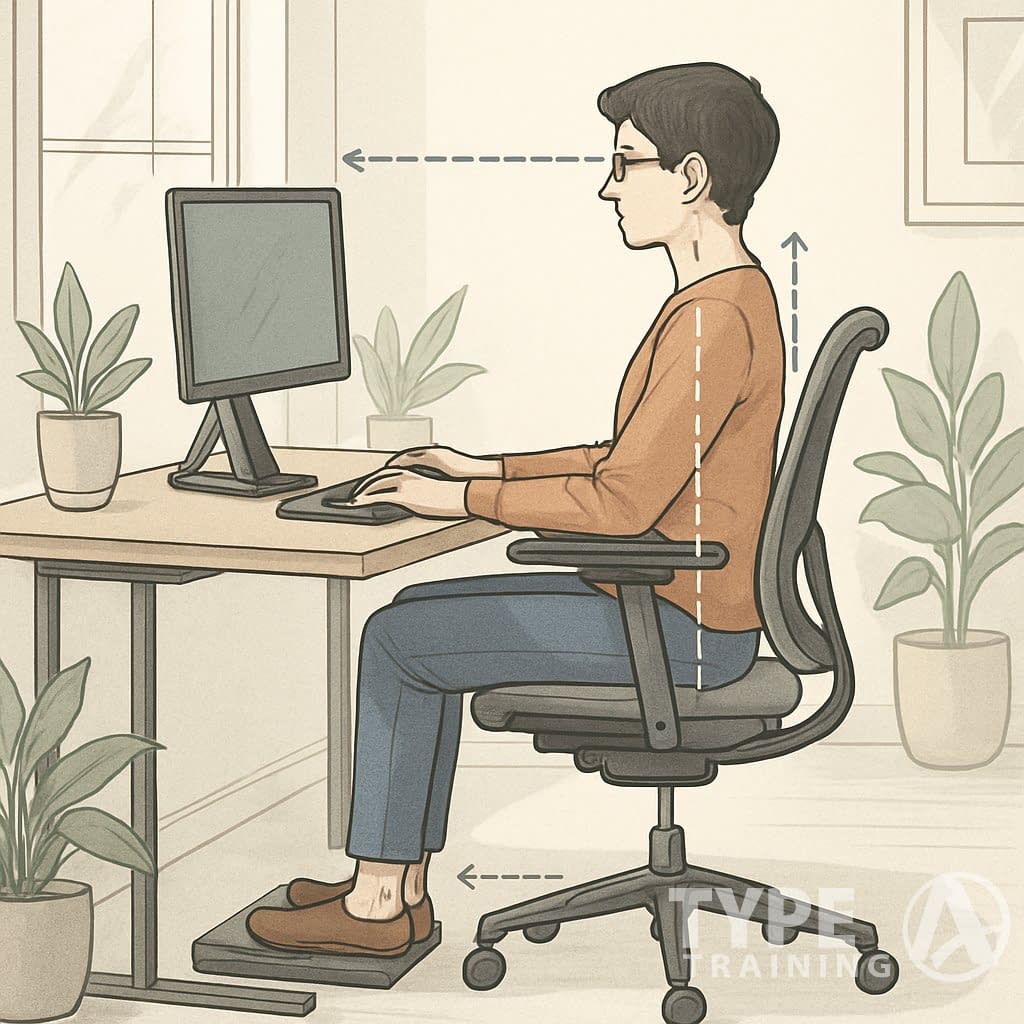
Remote work has changed how millions of employees move through their workdays. It’s created new challenges for keeping proper body alignment.
The shift from offices to home workspaces brings unique postural problems that can spiral into serious health issues if you ignore them.
Understanding the Connection Between Posture and Remote Work
Laptop-induced neck strain is extremely common. Most people use laptops as their main workstation, so you end up craning your neck downward, creating “tech neck.”
Working from couches or beds is tempting, but these soft surfaces offer zero support. You slouch, your spine curves, and your lower back takes the hit.
Kitchen table workstations aren’t much better. Dining chairs rarely have lumbar support, and tables usually sit at the wrong height for computer work.
A lot of remote workers develop forward head posture. Your head juts forward past your shoulders, especially when you lean in to see the screen.
Rounded shoulders creep in from hunching over keyboards. This tightens your chest and weakens your upper back—over time, the imbalance only gets worse.
Sitting for hours without breaks just makes things worse. Unlike in an office, you might not even realize you’ve barely moved all day.
Long-Term Health Consequences of Poor Alignment
Poor posture at home can set off a chain reaction of health problems.
Chronic back pain is probably the most common complaint. Slouching flattens your spine’s natural curves, which adds stress to your vertebrae and discs.
Neck and shoulder tension becomes a daily thing for a lot of people. Tight muscles can trigger headaches that zap your productivity and mood.
Reduced lung capacity is a sneaky one. When you hunch forward, your ribcage compresses, so you take shallower breaths and feel tired faster.
Digestive issues can show up too. Slouching compresses your organs, which slows digestion and can make you uncomfortable after eating.
Joint stiffness hits your hips, knees, and ankles if you sit too long. Blood flow drops, and your joints start to ache.
Muscle imbalances develop over time—weak glutes, tight hip flexors—and suddenly your entire alignment feels off.
Comparing Home Office and Traditional Office Posture
Traditional offices usually offer ergonomic furniture built for long hours at a computer. Adjustable chairs with lumbar support are standard, and desks sit at the right height.
At home, you probably just use whatever’s around. This creates postural challenges that offices just don’t have.
Movement patterns shift, too. In an office, you naturally get up for meetings or to chat with coworkers. At home, you might not move for hours.
Lighting makes a difference as well. Offices often have proper lighting that keeps you from leaning in to see your screen. Home lighting can force you into weird positions.
In offices, there’s external accountability—someone might notice if you’re slouching all day. At home, you’re on your own.
Desk setups at home are all over the place. Some folks have multiple monitors at the right height; others work from a laptop on a coffee table.
The psychological environment matters, too. Offices encourage alert, upright posture. Home, on the other hand, makes it way too easy to relax into a slouch.
Ergonomic Home Office Setup for Proper Alignment
Your home office setup makes or breaks your posture and long-term health. The right desk height, a supportive chair, and a well-placed monitor are the foundation for keeping your spine happy.
Choosing the Right Desk and Chair
Set your desk so your elbows bend at 90 degrees when you type. Most standard desks are 28-30 inches high—good for people between 5’8″ and 5’10”.
If your desk is too high, lower your chair and add a footrest. If it’s too low, try risers or a keyboard tray.
Chair Selection Priorities:
- Adjustable seat height (16-21 inches)
- Built-in lumbar support
- Armrests that move up and down
- Seat depth of 15-17 inches
Rest your feet flat on the floor, thighs parallel to the ground. The chair back should support your lower spine’s curve.
Set your chair so your hips are just above your knees. This takes pressure off your lower back and helps circulation.
If you can’t swing a fancy chair, put a small pillow or rolled towel behind your lower back. It’s a simple fix that helps your alignment a lot.
Optimal Monitor, Keyboard, and Mouse Arrangements
Keep your monitor 20-24 inches from your eyes. The top of the screen should hit at or just below eye level to avoid neck strain.
Monitor Setup Guidelines:
- Distance: Arm’s length away
- Height: Top edge at eye level
- Angle: Tilt it down 10-20 degrees
If you’re using a laptop, get a stand to raise the screen and plug in an external keyboard and mouse.
Put your keyboard right in front of you, wrists straight and floating above the keys. Keep your mouse at the same height, close enough to reach without stretching.
Store things you use often—phone, water, notebooks—within easy reach so you’re not twisting or reaching awkwardly.
Bump up your mouse sensitivity to reduce the effort needed for clicking and moving. It’s a small tweak, but your wrist and forearm will notice.
Lighting and Workspace Organization
Angle your monitor perpendicular to windows to cut down on glare. Sunlight on your screen makes you lean forward and squint, which ruins your posture.
Set up a desk lamp behind your monitor for balanced lighting. It’ll reduce eye strain and help you keep a comfy viewing distance.
Workspace Organization Tips:
- Keep cables tidy so you’re not tripping or stuck in place
- Put reference materials at monitor height
- Use a document holder to avoid looking down at papers
Make sure your legs and feet can move freely. Don’t stash stuff under your desk that pins you in place.
Create little zones for different tasks within arm’s reach. Keep your main work area clutter-free so you’re not reaching or twisting for things.
Task lighting should brighten your work but not cast shadows on your screen. Adjustable desk lamps let you control the light as the day goes on.
Daily Habits and Routines to Maintain Good Posture
Daily habits make a huge difference in preventing the aches and pains that come with remote work. Stretching, quick exercises, and smarter work schedules can keep your body feeling good.
Stretching and Movement Breaks
Regular stretch breaks keep your muscles loose. Set a timer every 30 to 60 minutes as a reminder to move.
Neck and shoulder stretches are a lifesaver. Roll your shoulders back five times, then forward five times. Turn your head left and right, holding each for 10 seconds.
Try the doorway chest stretch. Put your hands on a doorframe, step forward, and hold for 15 seconds to open up your chest.
Hip flexor stretches are helpful too. Step one foot back into a lunge and hold for 20 seconds per side. This undoes some of the tightness from sitting.
You don’t even have to leave your workspace. Stand up, reach overhead, bend side to side. Small moves, big relief.
Incorporating Exercise into Your Workday
Short bursts of exercise during work hours keep your body strong. No gym or fancy gear required.
Desk exercises are quick. Do 10 calf raises while standing. Try seated spinal twists by turning your upper body left and right.
Walking meetings are great if you’re on a call. Walk around your house or step outside while you talk.
Set movement reminders every hour. Do 10 squats, 5 push-ups against your desk, or just march in place for 30 seconds.
Strength exercises fight muscle weakness. Wall push-ups, chair dips, planks—you can do them all in a small space. Aim for 2-3 sets during your breaks.
The trick is to make exercise feel normal. Start with 2-3 minutes each hour and work up from there.
Posture-Friendly Work Schedules
Scheduling smart can protect your body from long, stressful work sessions. Plan your day around movement and posture breaks.
Time blocking helps you stay mindful. Work for 45-50 minutes, then take a 10-15 minute break to stand, stretch, or walk.
Tackle demanding tasks when your posture is fresh—usually in the morning. Save the easier stuff for later when you’re more likely to slouch.
Switch up your work positions during the day. Sit for a couple hours, then stand if you have a standing desk. Even moving from your desk to a kitchen counter helps.
Set posture check-ins on your phone—maybe at 10 AM, 2 PM, and 4 PM. It’s a simple nudge to straighten up and adjust.
Plan breaks based on how your body feels, not just your workload. Your spine and muscles need regular relief, especially when you’re working long hours.
Technology and Tools That Support Healthy Posture
Smart gadgets and digital tools can make it easier to keep good posture during those long workdays. There are wearables that vibrate when you slouch and apps that remind you to check your position—even during Zoom calls.
Wearables and Posture Trackers
Posture trackers stick to your back or shoulders and monitor your alignment in real time. The Upright GO 2 is a tiny device you stick between your shoulder blades—it vibrates if you slouch and syncs to an app to track your progress.
The LIARTY device uses sensors to catch when your back bends more than 25 degrees. It’s lightweight and designed to stay hidden during video calls.
Key features to look for:
- Adjustable vibration strength
- Battery life of 24-60 hours
- App for tracking progress
- Discreet enough for video conferences
Most wearables help you build better habits in 2-3 weeks if you use them regularly. Wearing them for 2-4 hours a day during your most focused work time works best.
Helpful Apps and Reminders
Posture apps ping your phone or computer, nudging you to check how you’re sitting. During video calls, these reminders help you tweak your posture before anyone catches you slouching.
Apps like Stretchly and Break Timer prompt you to take posture breaks every 20-30 minutes. Some even sync with your calendar, so you won’t get bugged during important Zoom meetings or client calls.
Popular app features:
- Custom reminder intervals
- Exercise demonstrations
- Progress tracking
- Silent mode for video conferencing
Many apps toss in quick desk stretches you can do between Microsoft Teams meetings. A few can even tell when you’re on a video call and switch to silent vibration alerts instead of noisy notifications.
Selecting Essential Accessories
The right accessories can really help your posture without draining your wallet. A laptop stand lifts your screen to eye level, which keeps your head from jutting forward during long video calls.
External keyboards and mice let you raise your laptop screen while your arms stay comfortable for typing. This setup works great for Slack messaging and document work between meetings.
Essential accessories:
- Adjustable laptop stand ($20-50)
- External keyboard and mouse ($30-80)
- Document holder for reference materials
- Footrest for proper leg positioning
Ergonomic chairs with lumbar support cost $100-500 and give you the best foundation for good posture. Look for a chair with adjustable height and backrest angle that actually fits your desk and video call setup.
Communication and Work-Life Balance in Remote Environments
Clear communication boundaries and genuine team connections matter a lot for remote workers. They help protect your mental health and keep burnout at bay.
Remote employees rack up an average of 9.4 unpaid overtime hours weekly. Structured communication is key if you want to stay sane and keep work sustainable.
Setting Boundaries Between Work and Home
Set your work hours and communicate them to your team. Mark yourself “away” after hours on messaging platforms. Turn off work notifications on your phone and computer when you’re off the clock.
Use separate channels for urgent and non-urgent messages. Email works for stuff that isn’t time-sensitive, while instant messaging is best for things that can’t wait.
Let your manager and colleagues know your expected response times. Tell them you’ll get to non-urgent messages within 24 hours on workdays.
Add your working hours to your email signature. This gives people a subtle hint about when you’re around.
Physical boundaries help too. Shut your laptop at the end of the day. If you can, stash work devices in a different room.
Try to say no to meetings outside your scheduled hours unless it’s truly urgent. Your time matters, just like anyone working in an office.
Maintaining Mental Health While Working Remotely
Take breaks regularly. Set reminders to get up and stretch every hour. Step away from your screen at lunch instead of eating at your desk.
Remote work can feel weirdly lonely. Schedule casual video calls with coworkers for coffee chats or virtual lunches.
Keep an eye on your stress and workload. If you start feeling overwhelmed, bring it up with your manager before it gets out of hand.
Cut back on social media during the workday—it can ramp up anxiety and kill your focus. Use website blockers if you need to.
Set up a dedicated workspace you can actually walk away from at the end of the day. Working from your bed or couch just blurs the line between work and rest.
If you’re feeling down or anxious, reach out for help. Many employers offer employee assistance programs with free counseling.
Fostering Team Communication and Connection
Set up regular one-on-one meetings with your manager and teammates. These chats build trust and help avoid misunderstandings.
Use video calls instead of just phone calls when you can. Seeing faces helps you feel more connected and less isolated.
Jump into virtual team building activities and informal chat channels. It might feel awkward at first, but it really does help you feel like part of the team.
Ask for feedback and clarification when you need it. Remote teams need more direct communication than in-person ones.
Share your challenges and wins with colleagues. Open communication builds supportive relationships and keeps you from feeling alone out there.
Create shared project docs so everyone stays in the loop. This way, you won’t need constant check-ins or status meetings that eat into your downtime.
For the complete posture training system, check out The Ultimate Guide to Posture Training for Busy Professionals.
Frequently Asked Questions
Remote workers often wrestle with setting up proper posture and avoiding pain. These questions cover workspace tweaks, break schedules, exercises, and gear that can help you stay comfortable all day.
What are the best ergonomic practices for setting up a home office?
Raise your laptop screen to eye level with a stack of books or a stand. This keeps you from hunching and straining your neck.
Use an external keyboard and mouse so your arms stay at a comfy 90-degree angle. It’s a small change, but your shoulders will thank you.
Adjust your chair so your feet sit flat on the floor. Your knees should make a right angle.
Add lumbar support to keep your spine’s curve happy. A small cushion or rolled towel does the trick if your chair doesn’t have built-in support.
Keep stuff you use a lot close by. This helps you avoid twisting and reaching that can mess up your back and shoulders.
How often should I take breaks to maintain good posture while working remotely?
Take a break every 30 to 60 minutes. Stand up and move around for at least 2-3 minutes.
Use your breaks to stretch your neck, shoulders, and back. Simple moves help keep stiffness and tension away.
Set reminders so you don’t forget to take breaks. Even with a perfect setup, your body needs movement.
Try micro-breaks every 15-20 minutes. Sometimes just rolling your shoulders or shifting in your seat helps.
Can you recommend exercises to prevent neck and back pain when working from home?
Try neck stretches: tilt your head toward each shoulder and hold for 15-30 seconds.
Do shoulder shrugs by lifting your shoulders up toward your ears, hold, then drop them. Repeat about 10 times.
Try a seated forward bend—reach toward your feet while sitting and hold for 15-30 seconds to stretch your back.
For your wrists, extend your arm and gently pull your fingers back. This helps if you’re typing a lot.
Add gentle seated spinal twists. Turn your torso left and right to keep your back flexible.
What is the ideal chair and desk setup to encourage proper posture during remote work?
Set your chair so your feet are flat on the floor. Use a footrest if needed.
Pick a chair with armrests to support your arms and ease shoulder tension. Your elbows should rest at about 90 degrees.
Adjust your desk so your elbows stay at 90 degrees while typing. Keep your wrists straight and neutral.
Sit all the way back in your chair, with your back against the backrest. This helps your spine stay aligned.
Leave 2-3 inches between the back of your knees and the chair edge for good leg circulation.
How can I ensure my laptop or monitor placement supports healthy posture?
Put your screen at arm’s length, about 20-26 inches from your eyes. You shouldn’t have to lean in to see.
The top of your screen should be at or just below eye level. This keeps your neck from craning up or down.
Tilt your screen back about 10-20 degrees. It reduces glare and gives you a comfy angle.
Keep your monitor centered in front of you. If it’s off to one side, you’ll end up twisting your neck.
If you use more than one monitor, set them at the same height and distance. The main one should be right in front of you.
What role does lighting play in maintaining good posture while working remotely?
Good lighting keeps you from leaning forward just to see your screen. If the lighting’s bad, you’ll probably end up hunching over your work.
Try putting your desk perpendicular to windows. That way, you won’t get annoying glare on your screen.
Direct sunlight can make you squint or push your head forward. No one needs that.
A simple desk lamp can spread light evenly across your workspace. That little bit of effort cuts down on eye strain.
If your screen’s way too bright or too dim, you’ll probably find yourself craning your neck. Adjust the brightness so it matches your room.
Think about the color temperature, too. Warmer light in the evening feels easier on your eyes and helps you stay comfortable.

